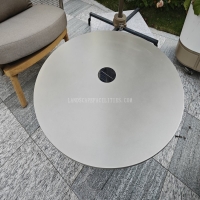Welcome to the website for landscape facilities products and knowledge.
What are the trade-offs between using natural materials like wood versus synthetic alternatives?
When choosing materials for construction, furniture, or design projects, the debate between natural materials like wood and synthetic alternatives is ongoing. Both options have distinct advantages and drawbacks, making the decision highly context-dependent.
Natural Materials (Wood):
1. Aesthetics & Feel: Wood offers a timeless, warm aesthetic that synthetic materials often struggle to replicate. Its natural grain and texture add organic charm.
2. Sustainability: Responsibly sourced wood is renewable and biodegradable, reducing long-term environmental impact.
3. Durability: High-quality wood can last decades with proper care, though it’s susceptible to moisture, pests, and warping.
Synthetic Alternatives:
1. Cost-Effectiveness: Synthetic materials like plastic composites or laminates are often cheaper upfront and require less maintenance.
2. Durability: Resistant to moisture, insects, and rot, synthetics excel in harsh environments where wood may degrade.
3. Environmental Concerns: Many synthetics are derived from non-renewable resources and are harder to recycle, contributing to pollution.
Key Trade-offs:
- Environmental Impact: Wood is eco-friendly if sustainably sourced, while synthetics often rely on fossil fuels.
- Longevity: Synthetics may outlast wood in wet conditions, but premium wood ages gracefully with proper care.
- Cost: Wood can be expensive initially but adds value over time; synthetics are budget-friendly but may lack prestige.
Ultimately, the choice depends on priorities: natural beauty and sustainability (wood) versus affordability and low maintenance (synthetics). Weighing these factors ensures the best fit for your project’s needs.
Related search:

Recommendation
Outdoor stainless steel table with solar-powered ambient lighting feature - excellent design.